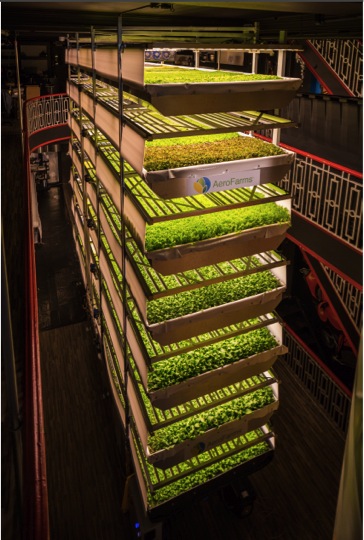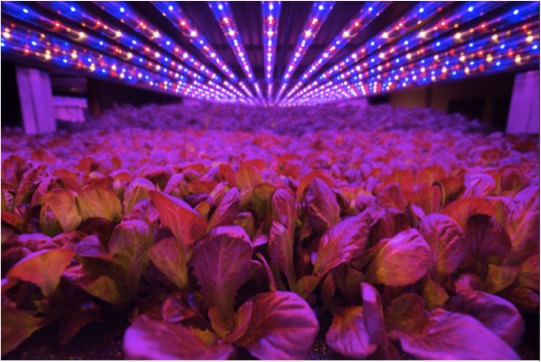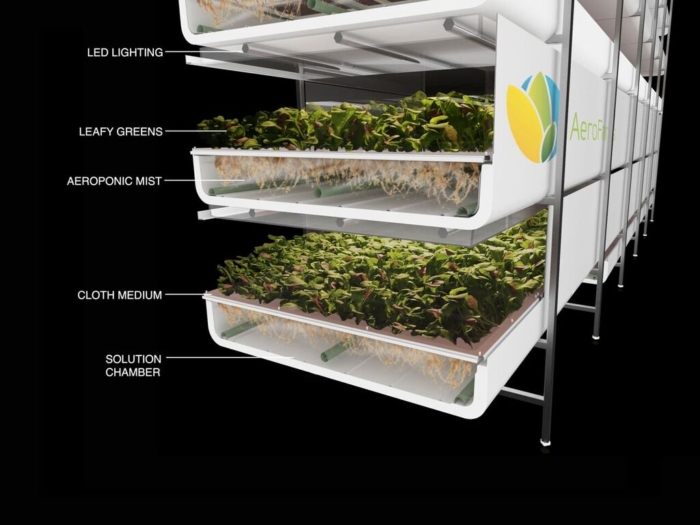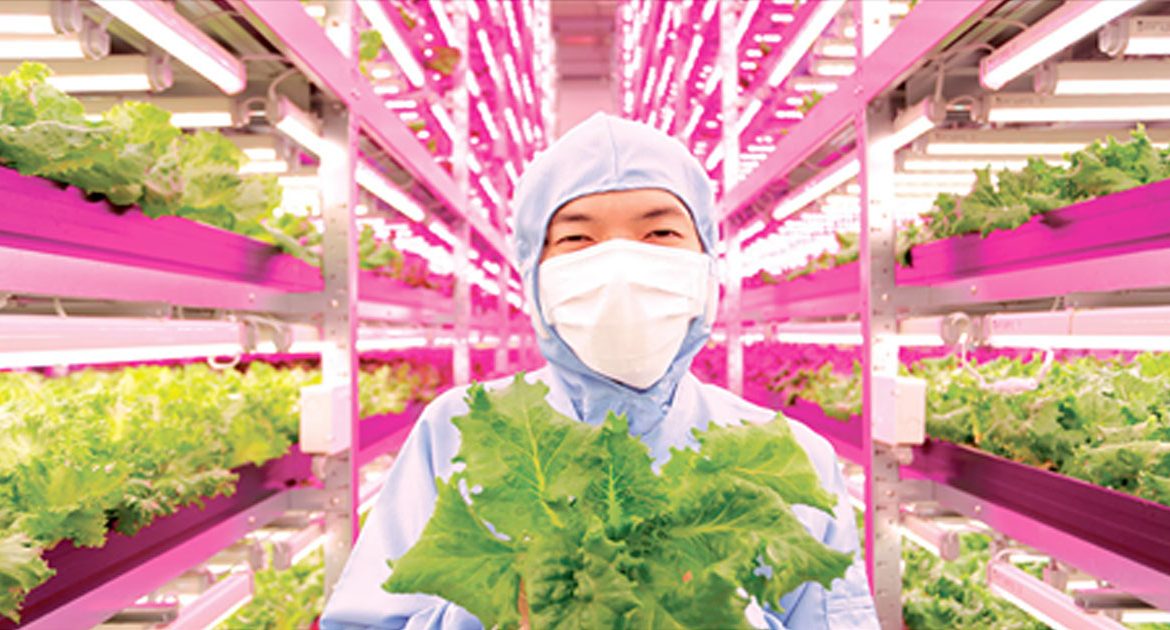Often known for its turnpike and gangsters, New Jersey is reclaiming its crown as the Garden State. Newark-based company AeroFarms has recently turned its headquarters into the world’s largest indoor vertical farm, with its first round of seeds expected to be sown in September this year.The farm is in a 69,000 square foot warehouse and former steel mill, in the heart of an industrial area. Definitely not where you’d expect your greens to be coming from.

AeroFarmsResearchandDevelopment“We grow in warehouses as opposed to greenhouses,” says David Rosenberg, CEO and co-founder of Aerofarms.
His company also grows without sun or soil and with 95% less water than field farms. It sounds impossible, but it’s the result of a lot of research and development.
Aerofarm plants its seeds in trays that are lined with a specially developed, reusable cloth made from recycled plastic bottles. The fabric anchors the seeds’ roots and those roots are fed nutrients, water and oxygen directly by a mist. The aeroponic system is a closed loop system, meaning all water and nutrients are recirculated, which helps keep the farm’s water usage down.

AeroFarmsR&DFarmLEDTo take the sun out of the equation, the farms use LEDs for photosynthesis. If you’re wondering about how much energy it takes to replace the sun in this situation, the company says it’s not as much as you’d think. According to a spokesperson, “We have been growing exclusively with LED lights since 2009 and understand how to achieve more effective photosynthesis indoors than outdoors.”
“All of our lighting has been designed in-house along with all of our growing technology, differentiating our path from anyone else out there.

”AeroFarmsGrowTechAnd because of the sterile fabric plus its controlled indoor environment, the farms use no pesticides.
Using its patented technology, the company says the Newark farm will harvest up to 2 million pounds of greens this year. The farms have 12-16 day crop cycles, and because the crops aren’t vulnerable to the whim of Mother Nature, they can produce year round – meaning around 22 crops annually compared to 3 per year in the field.
As well as cutting down on water use and pesticides, the company is also aiming to make a dent in transport pollution. Most fresh greens consumed in North America are grown in California, Arizona or Mexico. Rosenberg says he wants to disrupt traditional supply chains by building vertical farms on major distribution routes around the world, to and enable “local farming at commercial scale.”
“Often where we produce food isn’t coupled with where the people are that eat the food,” says Rosenberg, “So here we’re creating that linkage.”Aerofarm’s Newark farm is a great first example, selling to the New York metro area which is just a short journey along that turnpike.
Because of the modular tray system the farm uses to plant its crops, farms can be stacked to fit various spaces. And it doesn’t need to be a massive warehouse like the farm in Newark – the company installed a much smaller scale farm in the dining hall of a local school, that Michelle Obama visited a few months ago. The school farm seems to have been a huge success, with students getting the experience of harvesting their own greens, as well as direct access to fresh and healthy food. The future of farming has already won over the future generation.






